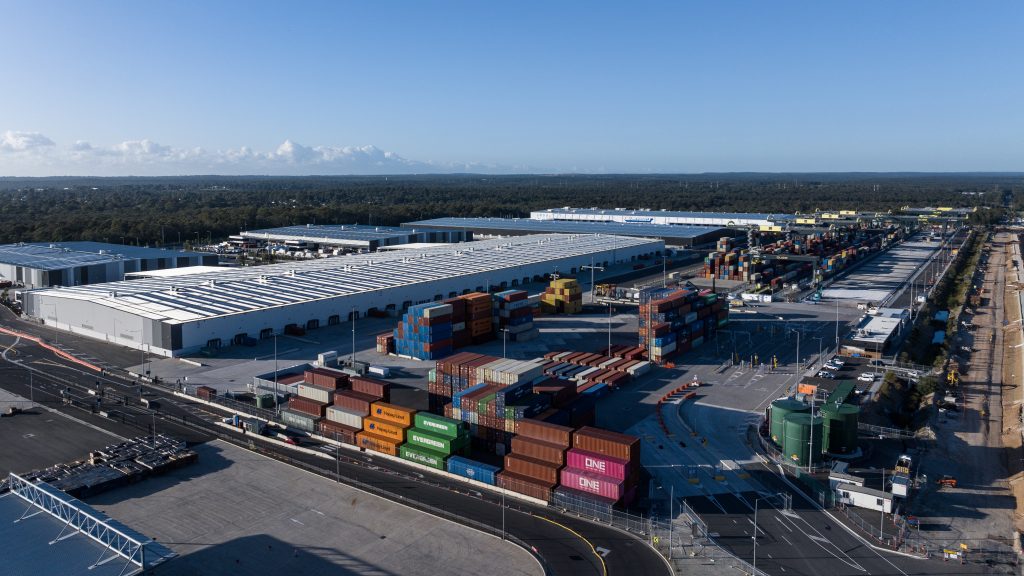Intermodal precincts
What is an intermodal precinct?
Intermodal precincts are nationally significant infrastructure developments which operate as a hub, connecting multi-modes of transportation.
By incorporating warehousing and supply chain services that enable on-site processing, modern intermodal precincts allow customers to choose the best transport option, with the right mode available for each leg of the supply chain.
Intermodal terminals play a significant role in the efficient consolidation, storage and transfer of freight between different modes of transportation, such as ship, rail, road, plane or drone, resulting in reduced costs.
Intermodals minimise the need for any unnecessary “handling” of freight between the point of origin and the final destination.
This means:
- Fewer loading/unloading processes
- Reduced opportunity for worker injury
- Lower risk of cargo loss (damage or theft)
- Reduction in freight transportation costs
- Lower energy consumption & emissions

Creating a supply chain built on choice, flexibility and sustainability.
Given the impacts of COVID-19 and global political events on the Nation’s supply chains, there has been a gradual shift towards ‘just in case’ inventory management as compared to the recently traditional ‘just in time’ way of managing inventory.
Just in case inventory management is a model whereby businesses maintain an excess of goods over and above anticipated short-term demand in order to be able to respond to any sudden demand rises or supply chain disruptions.
Just in time inventory management on the other hand, relies upon overseas facilities holding inventory and relying upon the international supply chain delivering to a customer once ordered. Locally held stock is kept to an absolute minimum.
Currently, intermodal terminals in Australia are predominately focused on the transfer of freight from one mode to another and typically are not co-located with significant warehousing and multi-mode capabilities.
Today’s intermodal terminals are largely subject to urban encroachment, limiting the space to accommodate significant on-site warehousing that has the potential to lower the overall costs to consumers.
Our Intermodal Precincts
Brisbane
The Australian and Queensland Governments are currently undertaking a joint business case to consider the development of an intermodal precinct in South-east Queensland to support Inland Rail.
Sydney
The Moorebank Logistics Park is located 32km from Sydney’s CBD and covers over 240 hectares of land in South-west Sydney.
Melbourne
To meet Victoria’s growing freight and logistics needs, we’re working with the Australian and Victorian Governments to deliver intermodal freight precincts at Truganina in Melbourne’s west, and Beveridge in the outer north.
Open access
The Australian logistics market is currently made up of a small number of major intermodal terminal operators, which in some cases have limited open access arrangements. This can discourage new entrants to the freight market, resulting in lower levels of competition and potentially higher prices for consumers.
The intermodal precincts National Intermodal is working to develop will operate on fully open access principles, available to all accredited freight operators on fair and equal terms.
Having open access intermodal precincts within Australia’s freight network is vital to ensure that opportunities for new market entrants are available, and healthy competition is promoted within the existing freight market.
Success through partnership
We are working with commercial partners, operators and industry experts to build the intermodals of the future and transform Australia's supply chains.
Be part of this exciting transformation and get in touch today.
Explore opportunities
Terminal development contacts
